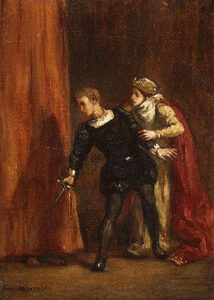A question from the audience!
What is the cause of the tragedy in Romeo and Juliet?
Is this an open and debatable question, or is it one that has a specific answer that popular opinion gets wrong? The tragedy of Romeo and Juliet is not in the romantic notion “Oh no, it’s so sad they couldn’t be together!” It’s in the stupidity of the adults who don’t see the error of their ways until Fate kills their children for them and says “Now do you get it???” Or is it? Discuss. Or perhaps I’ve misinterpreted the question about the “cause” of the tragedy? Bonus question – what do you think happens after the conclusion of the play? Do you think that Capulet and Montague really do learn their lesson, and the feud is over? Or are they merely going through the paces (for some reason the images of Heat Miser and Snow Miser from Year Without A Santa Claus just came to mind…), and will be at each other’s throats again 5 minutes after the Prince dismisses them? Oh dear god somebody gouge out my brain for thinking of this, but I blame Disney…..could you imagine Romeo & Juliet : The Sequel? !

